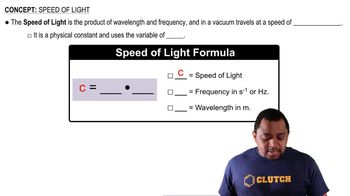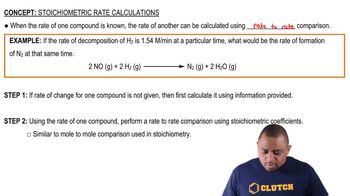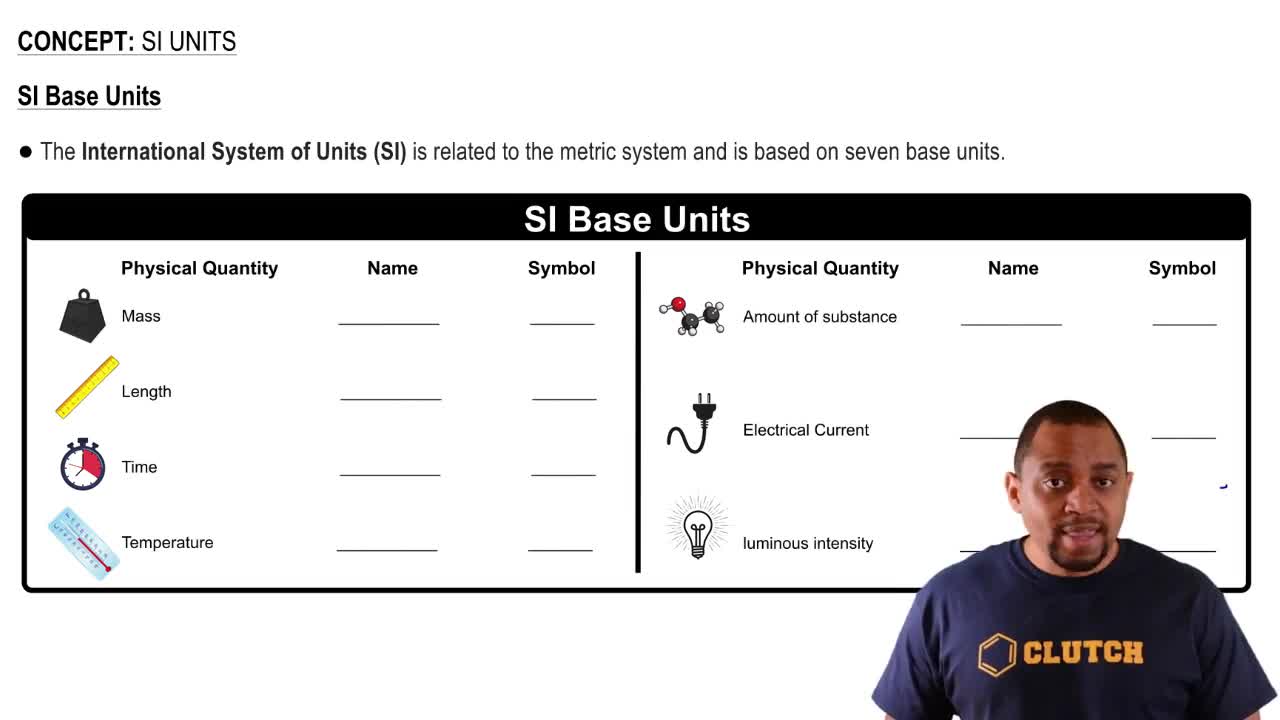What are the possible values of ml for each value of l? c. 2 d. 3
Ch.7 - Quantum-Mechanical Model of the Atom
Chapter 7, Problem 36
The nearest star to our sun is Proxima Centauri, at a distance of 4.3 light-years from the sun. A light-year is the distance that light travels in one year (365 days). How far away, in km, is Proxima Centauri from the sun?

Verified Solution
Video duration:
0m:0sWas this helpful?
Key Concepts
Here are the essential concepts you must grasp in order to answer the question correctly.
Light-Year
A light-year is a unit of distance that represents how far light travels in one year. Since light moves at a speed of approximately 299,792 kilometers per second, a light-year is equivalent to about 9.46 trillion kilometers. This concept is essential for understanding astronomical distances, as it allows us to express vast spaces in manageable terms.
Recommended video:
Guided course

Speed of Light Formula
Distance Calculation
To find the distance to Proxima Centauri in kilometers, one must convert light-years to kilometers. This involves multiplying the number of light-years (4.3) by the number of kilometers in one light-year (approximately 9.46 trillion). Mastery of unit conversion is crucial in chemistry and physics for accurately interpreting and solving problems involving different measurement systems.
Recommended video:
Guided course

Stoichiometric Rate Calculations
Astronomical Units
Astronomical units (AU) are another way to measure distances in space, where 1 AU is the average distance from the Earth to the Sun, approximately 149.6 million kilometers. While light-years are often used for interstellar distances, understanding AU helps contextualize distances within our solar system. This knowledge is beneficial for comparing distances between celestial bodies.
Recommended video:
Guided course

SI Units
Related Practice
Textbook Question
666
views
Open Question
Calculate the wavelength of each frequency of electromagnetic radiation, assuming four significant figures: a. 100.2 MHz (typical frequency for FM radio broadcasting) b. 1070 kHz (typical frequency for AM radio broadcasting) c. 835.6 MHz (common frequency used for cell phone communication).
Textbook Question
The distance from the sun to Earth is 1.496×108 km. How long does it take light to travel from the sun to Earth?
2223
views
Textbook Question
List these types of electromagnetic radiation in order of (ii) increasing energy per photon. a. radio waves b. microwaves c. infrared radiation d. ultraviolet radiation
605
views
Textbook Question
List these types of electromagnetic radiation in order of (i) increasing frequency and (ii) decreasing energy per photon. a. gamma rays b. radio waves c. microwaves d. visible light
4404
views
1
rank
Textbook Question
Calculate the frequency of each wavelength of electromagnetic radiation: a. 632.8 nm (wavelength of red light from helium–neon laser) b. 503 nm (wavelength of maximum solar radiation) c. 0.052 nm (wavelength contained in medical X-rays)
1911
views
